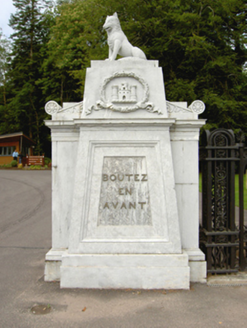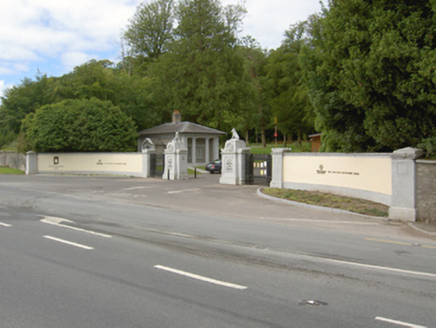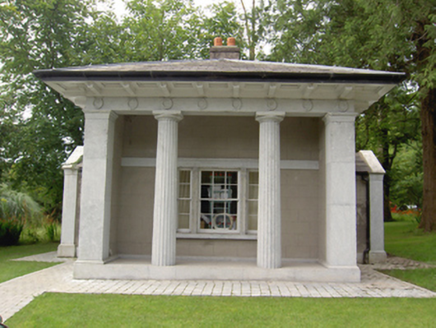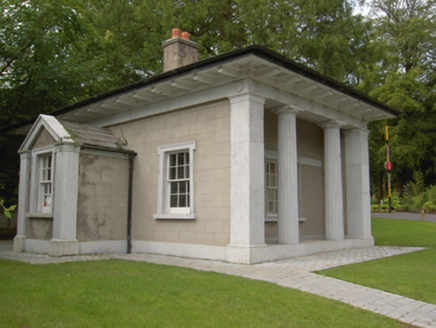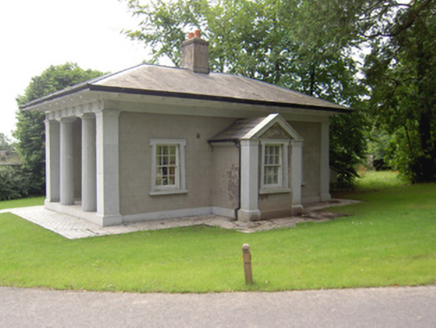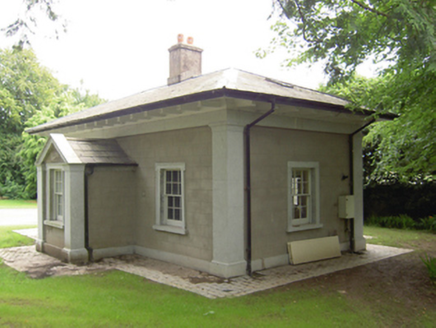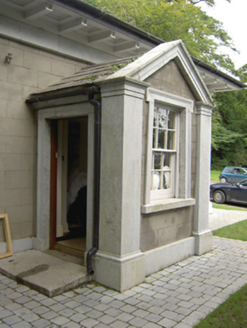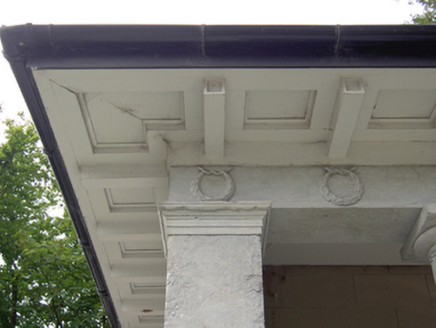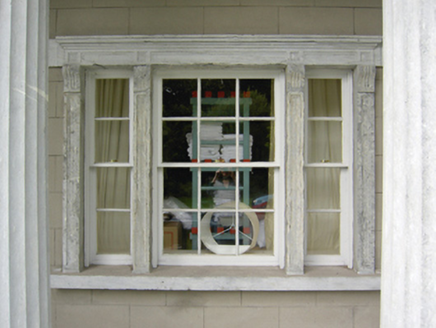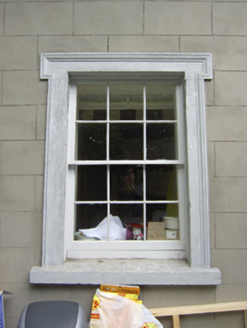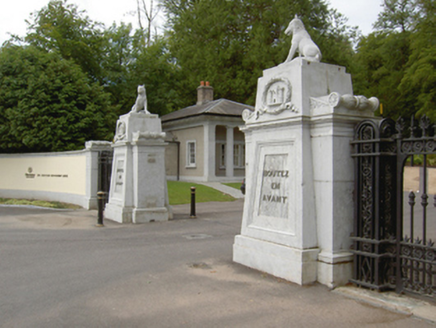Survey Data
Reg No
20907564
Rating
Regional
Categories of Special Interest
Architectural, Artistic
Previous Name
Foaty House
Original Use
Gate lodge
In Use As
Building misc
Date
1810 - 1830
Coordinates
180733, 71789
Date Recorded
24/07/2007
Date Updated
--/--/--
Description
Detached single-bay single-storey former gate lodge, built c. 1820, with portico to front (north) elevation and gabled porches to east and west elevations. In use as store. Pyramidal slate roof with overhanging timber coffered eaves and rendered chimneystack. Pitched slate roof with cut limestone coping to porches. Lined-and-ruled rendered walls with carved and cut limestone eaves course, plinth, corner pilasters and portico comprising free-standing fluted columns supporting decorative entablature. Carved and cut limestone corner pilasters to porches. Square-headed window openings, splaying to bases, with carved limestone surrounds and six-over-six pane timber sliding sash windows. Square-headed tripartite opening to north elevation with carved limestone surround and six-over-six pane flanked by two-over-two pane timber sliding sash windows. Square-headed door opening to south elevation of east porch with carved limestone surround and timber panelled door. Rendered sweep walls to entrance with carved limestone plinths and copings, square-profile carved limestone piers, paired and those to interior having classical detailing including recessed panels, decorative motifs to caps and animal statue finials. Cast-iron piers and pedestrian gates.
Appraisal
Classically inspired gate lodge to the historically important Fota House demesne, seat of the Barry-Smith family. This monumental Grecian temple alludes to and echoes the style and import of the impressive country house beyond. Fota House was enlarged to the design of Sir Richard Morrison and his son William Vitruvius Morrison, some of the most influential architects in Ireland during the nineteenth century, and this gate lodge was probably constructed at that time. The Fota House demesne once comprised the whole island, the survival of its notable demesne structures, distinguished gardens and formal layout adds significantly the country's national heritage.
